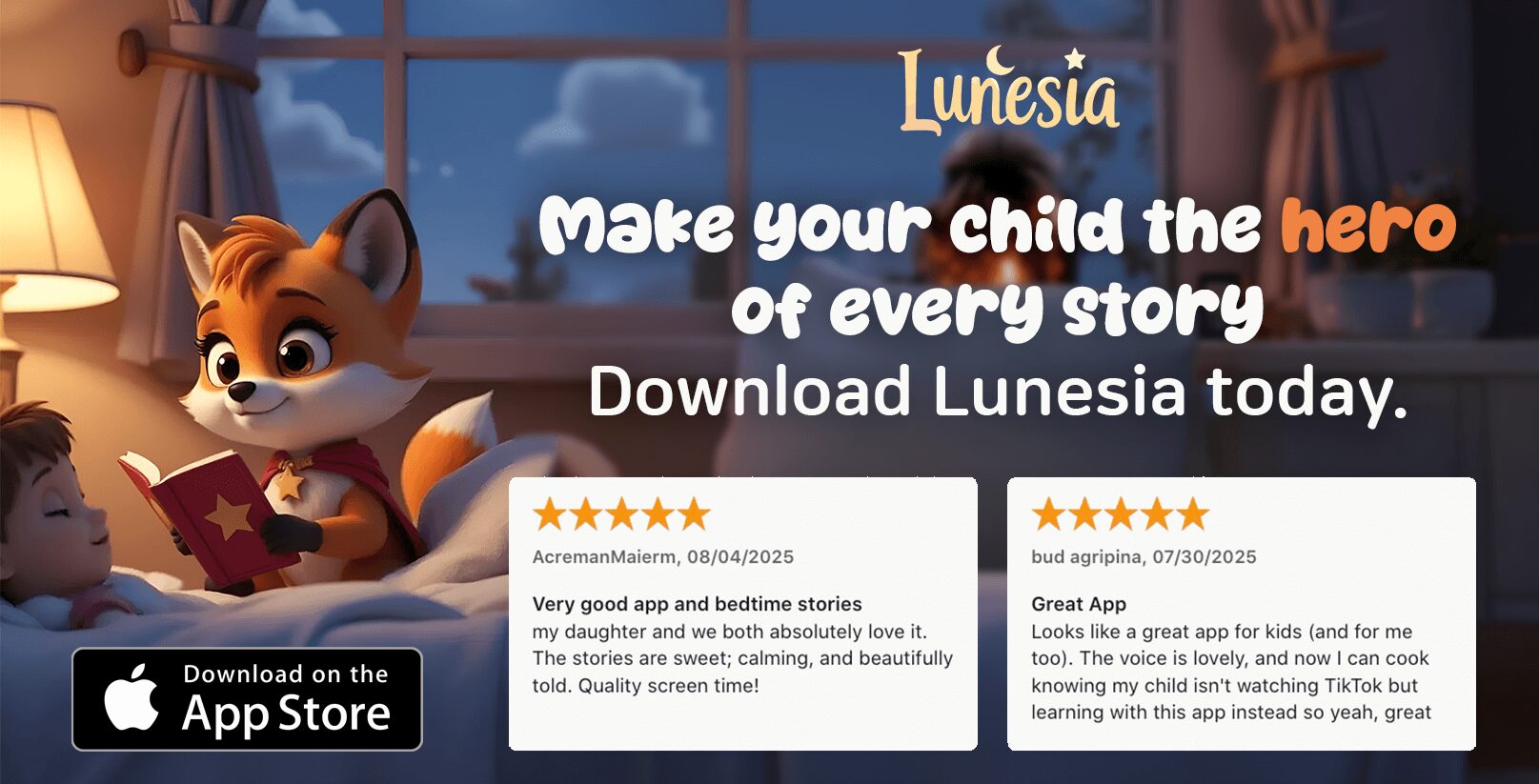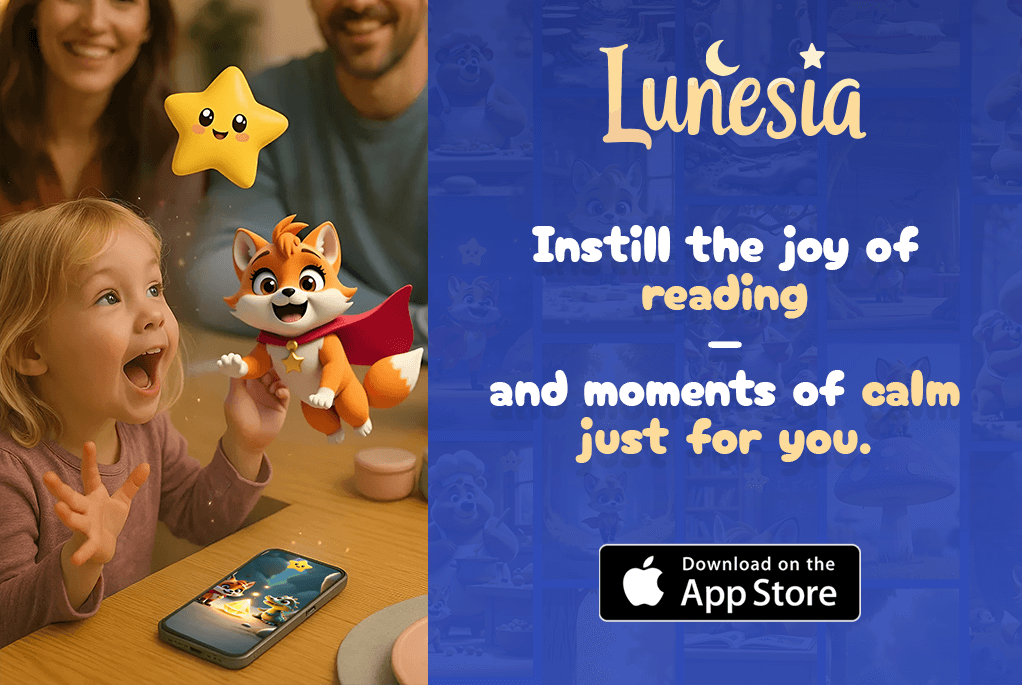As a language learner, have you ever felt like you’re stuck in a rut, unable to retain new vocabulary or struggle to converse with native speakers? You’re not alone! Many of us have experienced the frustration of traditional language learning methods that focus on memorization rather than immersion.
I’m here to help you explore a different approach to language learning, one that harnesses the power of narrative to engage and inspire. In this article, we’ll delve into the world of Lunesia and traditional language learning apps, examining the benefits and drawbacks of each. By the end, you’ll have a clearer understanding of which method is best suited to your learning style and goals.
The Evolution of Language Learning Apps
The landscape of language learning has undergone a significant transformation with the advent of digital technology. As an adult, learning a language takes work, and language learning apps can be a great motivator to do that work.
Most language learning apps are designed to be used in short sessions, just a few minutes a day, with the goal of building a regular habit over time. However, it’s essential to remember that no app can turn you into a fluent speaker on its own; that requires regular conversation with native speakers.
From Textbooks to Digital Learning
The early digital language tools were essentially electronic flashcards, but today’s apps incorporate sophisticated algorithms, speech recognition, and personalized learning paths that adapt to your progress. This shift has transformed language learning from a static, textbook-based approach to a dynamic, interactive experience.
| Feature | Traditional Learning | Digital Learning |
|---|---|---|
| Interactivity | Limited | High |
| Personalization | Low | High |
| Accessibility | Limited | High |
Different Approaches to Language Acquisition
Two main philosophical approaches have emerged in language learning apps: structured vocabulary acquisition and narrative immersion. Structured vocabulary acquisition focuses on building blocks of words and grammar, while narrative immersion involves learning through context and stories.
Understanding these different approaches and how they align with natural language acquisition theories can help you choose the best app for your learning style. Modern apps also use techniques like gamification, streaks, and social features to keep learners motivated and consistent with their practice.
Understanding Narrative-Based Language Learning
Our brains are wired to respond to stories, making narrative-based learning a potent tool for language acquisition. This approach leverages our innate love for stories to enhance language learning, making it more engaging and effective.

How Stories Enhance Language Retention
When we learn a language through stories, our brains create rich neural networks that connect words with emotions, visuals, and context. This makes vocabulary stick in our long-term memory more effectively. Stories provide natural repetition of vocabulary and grammar patterns without the tedium of rote memorization, allowing learners to encounter the same words in different contexts.
The narrative approach mimics how children naturally acquire their first language – not through memorizing word lists, but by absorbing language in meaningful contexts where words have purpose and emotional resonance. This method not only aids in language retention but also helps learners understand cultural nuances, idioms, and natural speech patterns that vocabulary-only approaches often miss.
The Psychology Behind Learning Through Narratives
Research shows that narrative-based learning activates multiple brain regions simultaneously, creating stronger memory traces than isolated vocabulary study. This is because stories create an emotional connection to the language, making learning more engaging and memorable while reducing the cognitive load that often makes language learning feel overwhelming.
By tapping into our brain’s natural affinity for stories, narrative-based language learning offers a more holistic and engaging approach to acquiring a new language. It’s not just about learning words; it’s about experiencing a new culture and context, which is crucial for effective language acquisition.
Introducing Lunesia: The Story-Driven Approach
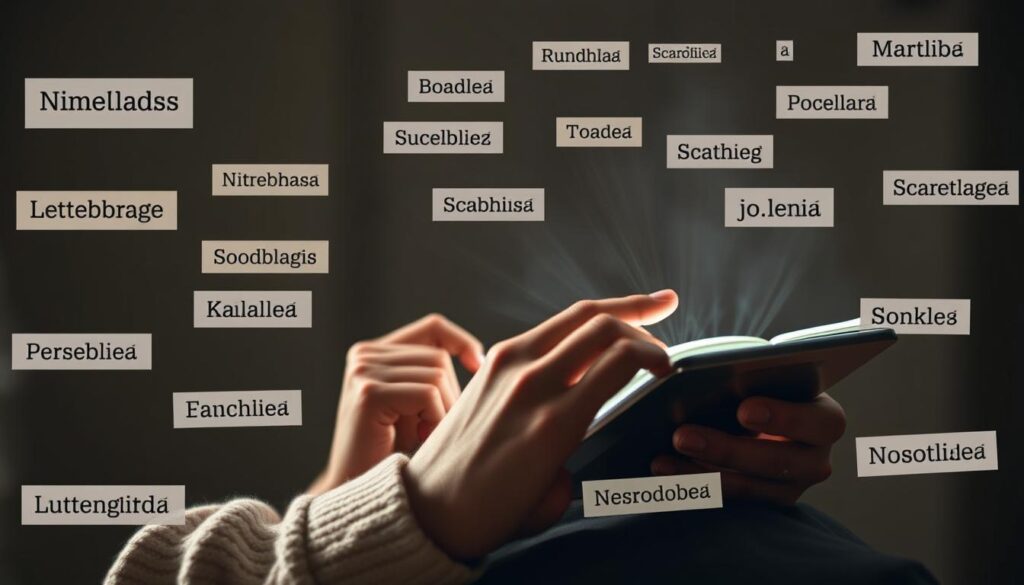
Discover Lunesia, the innovative language learning app that’s changing the way we acquire new languages through immersive storytelling. Lunesia represents a revolutionary approach to language learning that centers around engaging narratives rather than isolated vocabulary drills or grammar exercises.
Core Features and Methodology
Lunesia’s core methodology uses engaging narratives with recurring characters to create emotional investment while naturally introducing new vocabulary and grammar structures. The app’s unique features include interactive stories where your choices affect the narrative, creating a personalized learning experience that adapts to your interests and learning pace.
This interactive approach not only makes learning more enjoyable but also enhances retention by making the lessons more memorable.
Target Audience and Language Options
Lunesia is designed for a wide range of learners, particularly those who are visual or creative thinkers, or those who have struggled with traditional language learning methods. The app currently offers several languages, with plans to expand to less commonly taught languages in the future.
By incorporating cultural elements into their stories, Lunesia helps learners understand cultural contexts alongside language skills, providing a more holistic learning experience.
Vocabulary-Focused Language Apps: The Traditional Method
Language learning apps that concentrate on vocabulary have long been a staple for those seeking to improve their linguistic abilities. These apps operate on the principle that a strong foundation in vocabulary is crucial for language proficiency.
The Science Behind Vocabulary Acquisition
Our brains process and store vocabulary through complex neural networks. Research suggests that knowing approximately 2,000-3,000 high-frequency words can help you understand about 80% of everyday conversations. This is because our brains are wired to recognize patterns, and familiar words create a framework for understanding context.
As Dr. Stephen Krashen, a renowned linguist, once said,
“Vocabulary is not just a list of words; it’s a gateway to understanding and communicating effectively.”
This underscores the importance of vocabulary in language learning.
Spaced Repetition and Gamification
To aid in long-term retention, many vocabulary-focused apps employ spaced repetition systems (SRS). This scientifically-proven method presents words at optimal intervals to reinforce memory. For instance, an app might use a “Review Manager” to track encountered words and schedule reviews. Additionally, gamification elements like points, levels, and streaks create dopamine hits, keeping learners motivated.
| Method | Description | Benefit |
|---|---|---|
| Spaced Repetition | Reviews words at optimal intervals | Improves long-term retention |
| Gamification | Uses points, levels, and streaks | Maintains learner motivation |
By structuring content to start with high-frequency words and common phrases, these apps provide a clear progression path for learners. This approach is particularly beneficial for analytical learners who prefer measurable progress.
In conclusion, vocabulary-focused language apps offer a traditional yet effective method for language learning. By understanding the science behind vocabulary acquisition and leveraging techniques like spaced repetition and gamification, learners can achieve significant progress in their language journey.
Duolingo: Gamified Vocabulary Building

In the realm of language acquisition, Duolingo has made a significant impact with its game-like lessons. This language learning app has revolutionized the way we approach vocabulary building, making it an engaging and fun experience.
Overview
Duolingo’s biggest strength lies in its addictive game-like lessons and simple yet polished user interface. The app’s bite-sized format makes daily practice easy to incorporate into your routine, perfect for busy schedules.
Key Features
The app gamifies the learning process through point scoring, level progressions, and rewarding streaks. Duolingo’s lessons cover reading, listening, speaking, and writing through a mix of translation exercises, speaking practice, and quick comprehension tests.
Strengths and Limitations
While Duolingo is hugely effective for vocabulary building and getting beginners comfortable with a new language, more advanced learners may find it too simplistic. There’s also a lack of detailed feedback on pronunciation and speaking skills.
Pricing Structure
Duolingo offers a free version with all core features and a Premium subscription ($6.99/month) that removes ads, allows offline learning, and provides unlimited hearts (attempts). This flexibility makes it accessible to a wide range of learners.
Duolingo’s ability to form consistent learning habits through short, 5-minute lessons is one of its greatest strengths. The app’s colorful interface and playful characters create a low-pressure environment, reducing the intimidation factor often associated with learning a new language.
Babbel: Structured Curriculum Approach

In the realm of language learning apps, Babbel differentiates itself through a structured and academic-like curriculum. This approach appeals to learners seeking a comprehensive and systematic language acquisition experience.
Overview
Babbel’s strength lies in its curriculum-based progression system, which layers reading, writing, listening, and speaking exercises across practical, real-world topics. The lessons are designed to feel like classroom instruction, covering vocabulary, grammar, and pronunciation in a cohesive manner.
Key Features
The app’s features include a focus on practical, real-world conversations from the start, teaching vocabulary and phrases that are actually used when traveling or speaking with native speakers. Babbel’s methodology is grounded in linguistic research, with lessons that build on previous knowledge and introduce grammar concepts in a structured, logical progression.
Strengths and Limitations
One of Babbel’s significant strengths is its ability to balance repetitive drills with fresh content, reinforcing concepts effectively. However, the lack of gamification or immersive multimedia may make the lessons feel dry for some users. Additionally, the speech recognition technology, while helpful, isn’t always accurate.
Pricing Structure
Babbel operates on a subscription model, with prices starting at around $6.95/month for a 12-month subscription. While there’s no free version beyond the first lesson of each course, the comprehensive curriculum and structured approach make it a valuable investment for committed learners.
Rosetta Stone: Immersive Learning Method
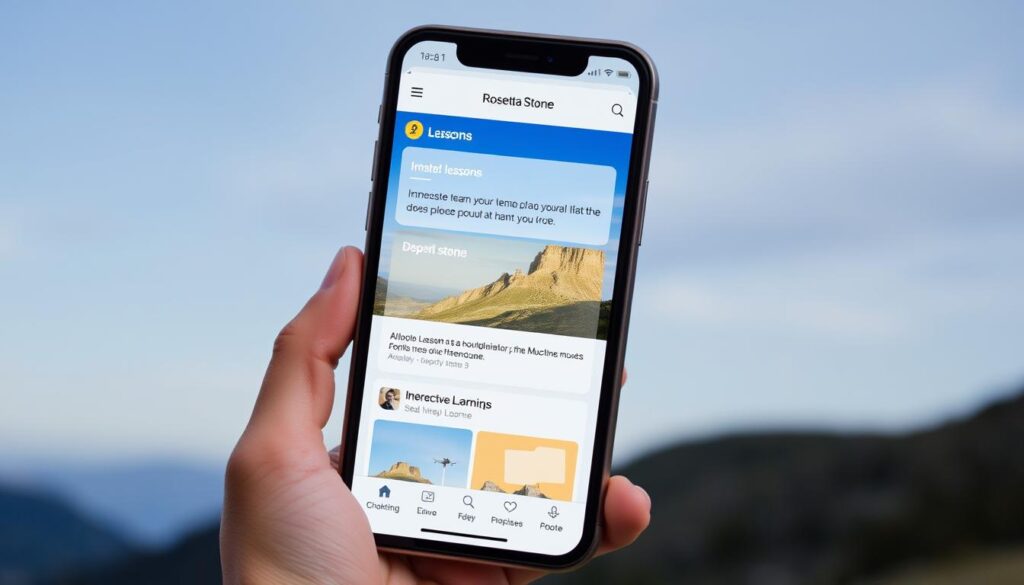
With its Dynamic Immersion method, Rosetta Stone offers a unique language learning experience that mimics how we naturally learn our first language as children. This approach focuses on associating words with images rather than translating them, providing a comprehensive learning environment.
Overview of Rosetta Stone
Rosetta Stone is a well-known language learning platform that has pioneered the immersion approach to digital language learning. By eliminating translation and forcing learners to think directly in their target language from day one, it provides an immersive experience. The app is designed to teach languages in a natural way, similar to how we learn our native language.
Key Features of Rosetta Stone
The Rosetta Stone app boasts several key features that enhance the learning experience. Its Dynamic Immersion methodology uses images paired with words and phrases to teach new languages. Additionally, the TruAccent speech recognition technology provides detailed feedback on pronunciation, helping learners perfect their accent. The structured progression of lessons moves from basic object identification to complex conversations, building logically on previous content.
Strengths and Limitations
One of the significant strengths of Rosetta Stone is its ability to create a strong foundation in the target language through its immersive approach. However, some learners may find that it lacks cultural context and practical conversational phrases needed in real-world situations. The app’s approach to not explicitly explaining grammar rules can be both beneficial and frustrating, depending on the learner’s preferences.
Pricing Structure
Rosetta Stone offers various subscription options to cater to different needs. The pricing includes a 3-month subscription at $11.99/month, a 12-month subscription at $7.99/month, and a lifetime access option for a one-time payment of $179. This positions Rosetta Stone as a premium option for serious language learners.
In conclusion, Rosetta Stone’s immersive learning method provides a unique and effective way to learn new languages. With its advanced speech recognition technology and structured lesson progression, it’s an excellent choice for those seeking a comprehensive language learning experience.
Lunesia vs. [Language App] Stories: Direct Comparison
In the landscape of language learning apps, Lunesia’s focus on stories offers a distinct alternative to vocabulary-centric platforms. As we dive into a direct comparison, it’s essential to understand how these different approaches impact the learning experience.
Learning Efficiency
When directly comparing Lunesia’s narrative approach with vocabulary-focused apps, I’ve observed distinct differences in how quickly learners grasp and retain new concepts. Lunesia’s story-based method excels at teaching language in context, helping learners understand not just what words mean but how they’re naturally used by native speakers in conversation.
Vocabulary-focused apps like Duolingo typically show faster initial progress with measurable metrics, while Lunesia’s narrative approach often leads to better long-term retention and natural usage.
Engagement and Retention Rates
I’ve noticed that engagement rates tend to be higher with Lunesia’s storytelling approach because emotional investment in characters and plot creates intrinsic motivation beyond streaks and points. This emotional connection can lead to higher retention rates as learners become more invested in the story and its characters.
Cultural Context and Immersion
Lunesia shines in teaching cultural nuances, idioms, and colloquialisms that are naturally embedded in stories. The immersion factor differs significantly – Lunesia creates a contextual environment where language feels alive, while vocabulary apps provide more structured but sometimes artificial learning environments.
Long-term Language Acquisition
For long-term acquisition, research suggests narrative-based learning creates stronger neural pathways and deeper understanding. Lunesia better prepares learners for real-world conversations with native speakers by exposing them to natural speech patterns.
| Feature | Lunesia | Vocabulary-Focused Apps |
|---|---|---|
| Learning Approach | Narrative-Based | Vocabulary-Centric |
| Initial Progress | Slower but more contextual | Faster with measurable metrics |
| Long-term Retention | Better retention through context | Dependent on spaced repetition |
| Cultural Immersion | High, through stories | Limited, often artificial |
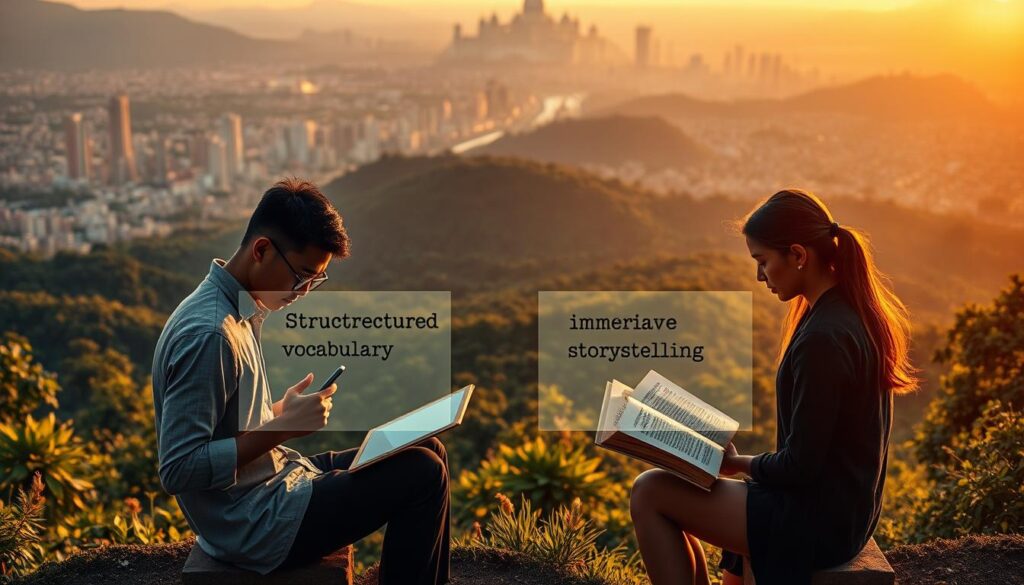
Which Learning Style Works Best for Different Learners
The effectiveness of a language learning approach depends significantly on the individual learner’s style. As we explore the world of language learning apps, it becomes clear that there’s no one-size-fits-all solution. Different learners benefit from different approaches, and understanding these differences is key to maximizing the effectiveness of language learning.

Visual vs. Auditory vs. Contextual Learners
Learners can be broadly categorized into visual, auditory, and contextual learners. Visual learners thrive with apps that provide strong imagery and written text, making language learning more engaging and memorable. On the other hand, auditory learners prefer apps with extensive listening exercises and pronunciation practice, helping them develop a more authentic accent and better comprehension. Meanwhile, contextual learners, who need to understand the “why” behind language, typically excel with narrative-based approaches like Lunesia, which show language in action rather than isolated vocabulary.
Age Considerations: Children vs. Adults
Age is another critical factor in determining the most effective learning style. Children absorb language more naturally through immersion and stories, without needing explicit grammar rules, making narrative-based approaches potentially more aligned with how young minds learn. In contrast, adults often benefit from more structured approaches that address their analytical thinking and desire to understand grammar rules explicitly, which vocabulary-focused apps typically provide. By considering these age-related differences, learners and educators can choose the most appropriate language learning apps to achieve their goals.
Ultimately, the most effective learning style or approach depends on a combination of factors, including the learner’s age, individual learning style, and previous language learning experiences. By understanding these factors and choosing the right language learning apps, learners can optimize their learning outcomes and achieve their language goals more efficiently.
Combining Approaches for Optimal Learning
I’ve found that the most effective way to learn a language is by combining different methods. While narrative-based apps like Lunesia provide context and cultural understanding, vocabulary-focused tools help reinforce specific words and phrases. This blended approach addresses different aspects of language acquisition, making it a comprehensive learning strategy.
Contextual Learning with Narrative Apps
Using narrative apps for context is an excellent way to engage with the language naturally. By immersing yourself in stories, you can pick up on nuances and expressions that are commonly used by native speakers. Lunesia’s narrative approach is designed to provide this kind of contextual learning, helping you understand how words and phrases function in real conversations.
For example, a learner might use Lunesia to read a story about a typical day in the life of a native speaker. This story would include common expressions, idioms, and vocabulary that are used in everyday situations. By reading and listening to this story, the learner can gain a deeper understanding of how the language is used in context.
Reinforcing Vocabulary with Targeted Tools
While narrative learning provides a rich context, supplementing with vocabulary-focused tools can help reinforce specific words and phrases. Apps that use spaced repetition and gamification can be particularly effective for building vocabulary. By combining these tools with narrative learning, you can strengthen your understanding of specific words and phrases, making them easier to recall when you need them.
Here’s an example of how you can combine narrative learning with vocabulary practice:
| Day | Narrative Learning | Vocabulary Practice |
|---|---|---|
| Monday | Read a story on Lunesia | Review vocabulary from the story using a flashcard app |
| Tuesday | Listen to a podcast on Lunesia | Practice vocabulary using a gamified app |
By alternating between narrative learning and vocabulary practice, you can keep your language learning fresh and engaging. The key is to find a balance that works for you and to be consistent in your practice.
Expert Opinions on Language Learning Methodologies
As we explore the world of language learning apps, it’s essential to consider expert opinions on their methodologies. The debate about the best way to learn a language has led to numerous studies and discussions among linguistic researchers.
Research on Narrative-Based Learning
Narrative-based learning has gained significant attention in recent years. Studies from Michigan State University have shown that students who used a story-based app for 12 weeks demonstrated significant improvements in speaking ability, grammar, and vocabulary. Dr. Stephen Krashen’s “Comprehensible Input Hypothesis” supports this approach, suggesting that we acquire language best when exposed to meaningful content slightly above our current level.
Neurolinguistic research reveals that stories activate multiple brain regions simultaneously, creating stronger neural networks for language retention than isolated vocabulary study. This is because stories provide context, making it easier for learners to remember and use new language effectively.
Studies on Vocabulary Acquisition
While narrative-based learning is effective, vocabulary acquisition is also a crucial aspect of language learning. Research from the University of California shows that emotional engagement, which stories naturally create, significantly improves memory formation for language learners.
Experts recommend a balanced approach. Dr. Paul Nation suggests dedicating 25% of learning time to focused vocabulary study and 75% to encountering language in meaningful contexts like stories. This balanced approach can help learners develop a robust vocabulary and improve their overall language proficiency.
| Learning Approach | Focus | Benefits |
|---|---|---|
| Narrative-Based | Contextual learning through stories | Improved retention, better comprehension, enhanced fluency |
| Vocabulary-Focused | Targeted vocabulary acquisition | Efficient word recognition, foundational knowledge |
| Balanced Approach | Combining narrative and vocabulary learning | Robust vocabulary, natural communication skills, comprehensive understanding |
The research consistently shows that while vocabulary apps can efficiently build word recognition, narrative approaches better develop the neural pathways needed for natural, fluent communication with native speakers. By understanding the strengths of each approach, learners can make informed decisions about their language learning journey.
Making Your Choice: Factors to Consider
Before diving into the world of language learning apps, take a step back and ask yourself: what’s your ultimate language learning goal? Choosing between Lunesia and vocabulary-focused apps depends on several personal factors that can significantly impact your learning experience.
Learning Goals and Timeline
Your language learning goals play a crucial role in selecting the right app. Are you preparing for travel, academic study, professional use, or personal enrichment? Your timeline also matters – vocabulary apps often show quicker initial progress for short-term goals, while narrative approaches like Lunesia typically yield better long-term fluency.
- Short-term goals: Vocabulary apps might be more suitable for basic travel phrases.
- Long-term goals: Narrative approaches like Lunesia for mastering a language.
Budget Considerations
Budget is another critical factor. Many vocabulary apps offer robust free versions, while narrative-based apps like Lunesia may require a subscription to access their full story libraries. Consider what you’re willing to invest in your language learning journey.
| App Type | Free Version | Subscription Model |
|---|---|---|
| Vocabulary Apps | Robust free versions available (e.g., Duolingo) | Optional premium subscriptions |
| Narrative-Based Apps | Limited free content | Required for full access (e.g., Lunesia) |
Personal Learning Style
Be honest about your learning style and past experiences. If traditional vocabulary memorization hasn’t worked for you, Lunesia’s narrative approach might be the change you need. Consider your available practice time and motivation factors as well.
By considering these factors, you can make an informed decision that aligns with your language learning goals and preferences.
Conclusion
After delving into the features of various language learning apps, one thing becomes apparent: there’s no one-size-fits-all solution. The right choice depends entirely on your individual learning style, goals, and preferences.
Lunesia’s narrative approach excels at creating contextual understanding and cultural awareness, making it ideal for those seeking deeper language mastery. On the other hand, vocabulary-focused apps like Duolingo, Babbel, and Rosetta Stone offer structured progression and efficient word acquisition, building a solid foundation, especially for beginners or those with limited study time.
Many successful language learners eventually adopt a hybrid approach, combining narrative immersion with targeted vocabulary practice. This blend allows for both contextual understanding and a robust vocabulary. It’s essential to remember that consistency matters more than methodology – the best language learning app is the one you’ll actually use regularly.
I recommend starting with a free trial of both narrative-based and vocabulary-focused approaches to discover which resonates with your learning style. Supplementing your app learning with real-world practice, such as conversations with native speakers or consuming authentic media, is also crucial for developing fluency.
The language learning journey is deeply personal, and finding the right tools that keep you motivated and engaged is key to long-term success. Whether you prefer captivating stories or satisfying vocabulary achievements, the most important thing is to find an approach that works for you and stick to it.
FAQ
What is the best way to learn a language?
The best way to learn a language is a matter of personal preference, but many learners find that a combination of immersion, practice, and repetition works well. Using a language learning app that incorporates narratives and vocabulary building exercises can be an effective approach.
How do I stay motivated while learning a language?
Staying motivated can be achieved by setting achievable goals, tracking your progress, and rewarding yourself for milestones reached. Many language learning apps offer features like streaks, badges, and leaderboards to help keep you engaged.
Can I learn a language with a language learning app alone?
While a language learning app can be a valuable tool, it’s often most effective when used in conjunction with other learning methods, such as speaking with native speakers, watching foreign language media, and reading books in the target language.
How long does it take to become proficient in a language?
The amount of time it takes to become proficient in a language depends on various factors, including the difficulty of the language, the frequency of practice, and the quality of instruction. With consistent effort, many learners can achieve a good level of proficiency within a few months.
What are the benefits of using a narrative-based language learning approach?
A narrative-based approach can help learners develop a more nuanced understanding of the language by providing context and cultural insight. This can lead to improved comprehension and retention of vocabulary and grammar.
Can language learning apps be used by learners of all ages?
Yes, many language learning apps are designed to be accessible to learners of all ages, from children to adults. Some apps may be more suited to certain age groups, so it’s worth exploring different options to find the one that best fits your needs.
![Lunesia vs [Language App] stories](https://lunesia.app/wp-content/uploads/2025/06/Lunesia-vs-Language-App-stories-1024x585.jpeg)
